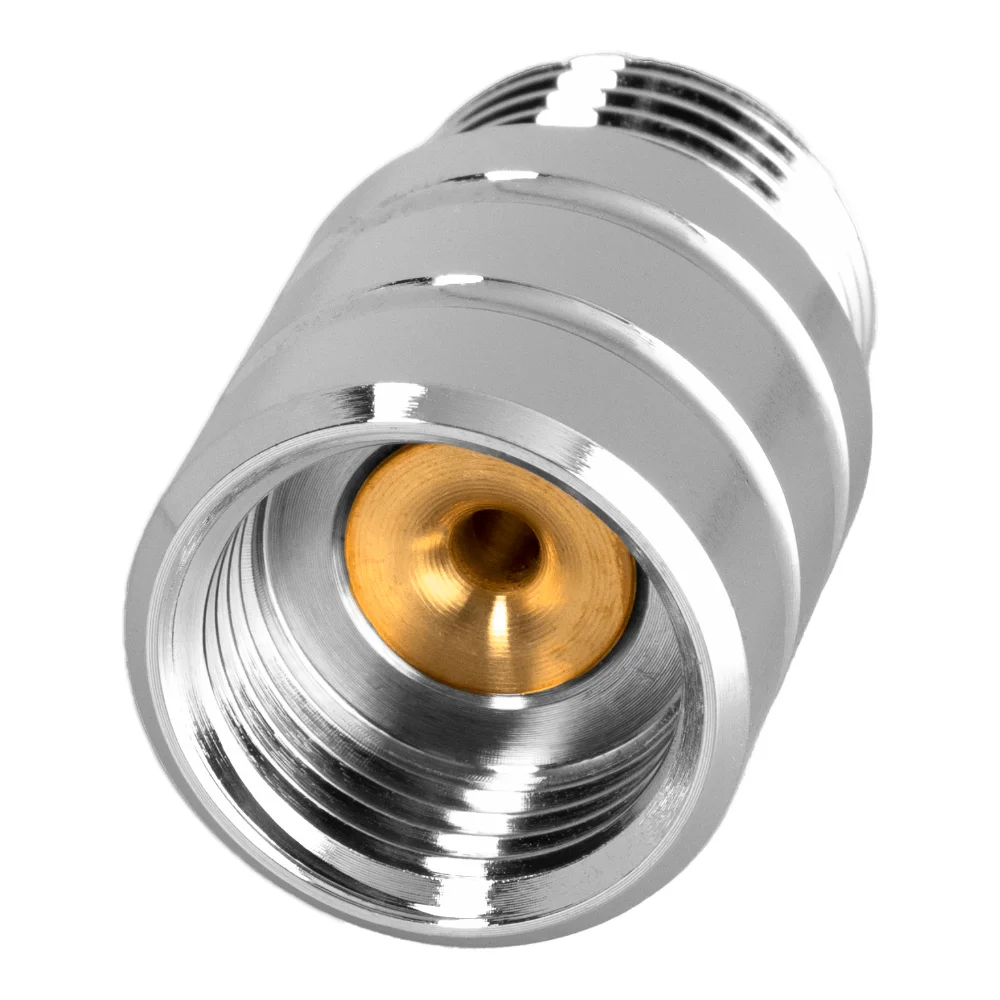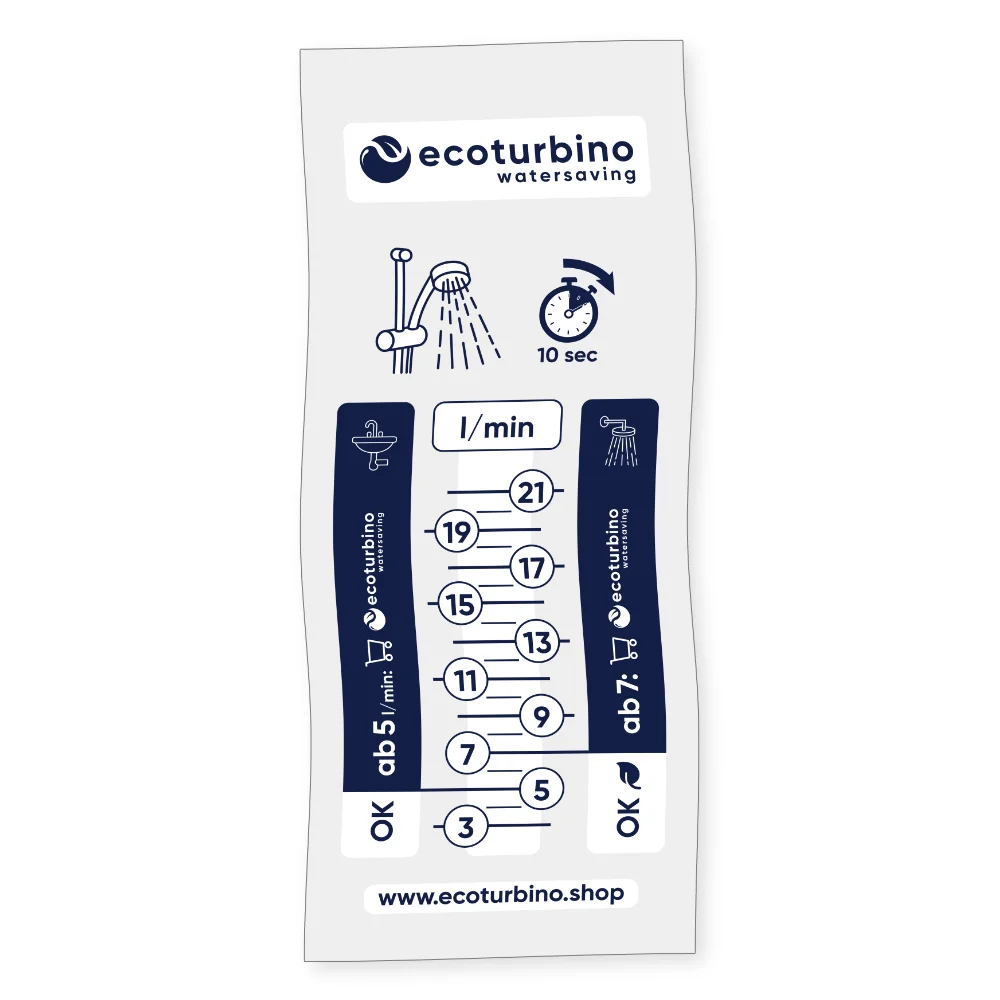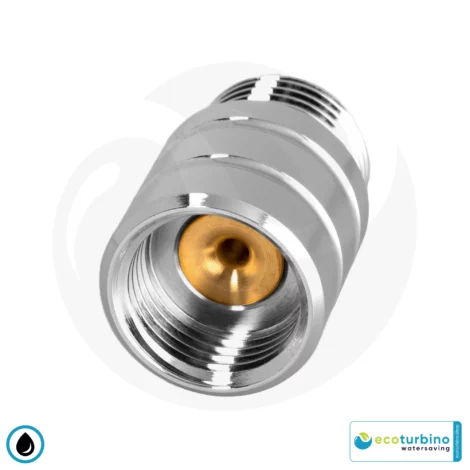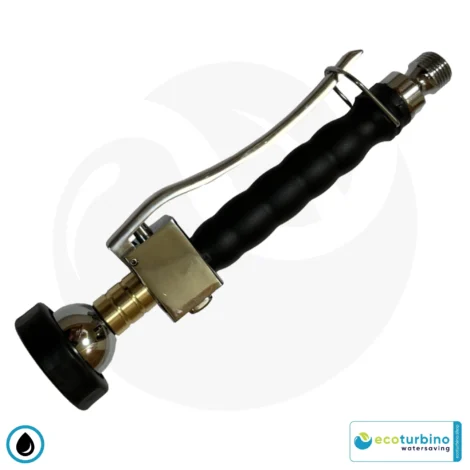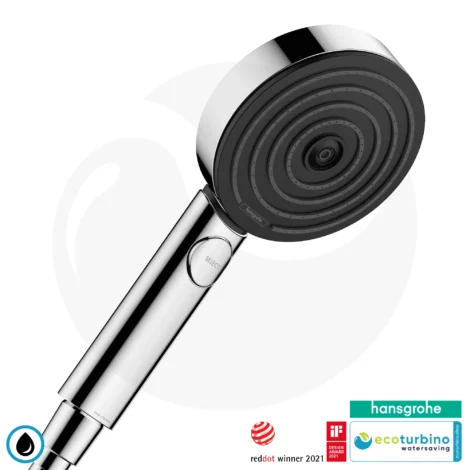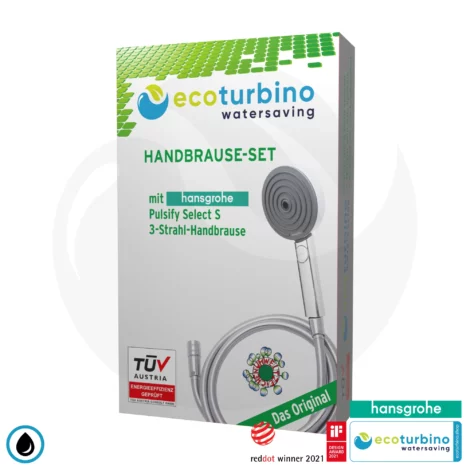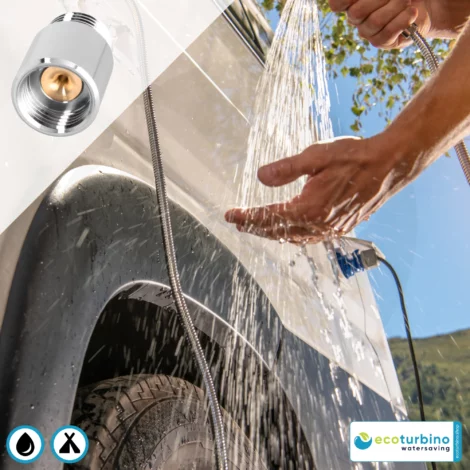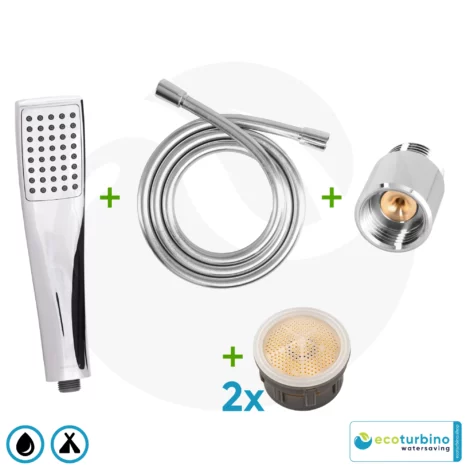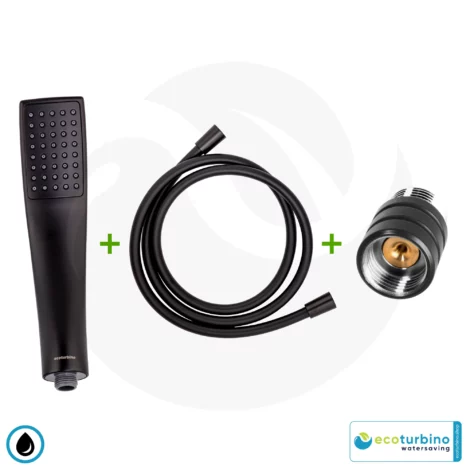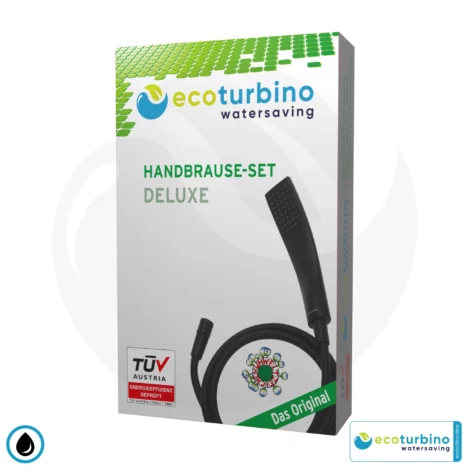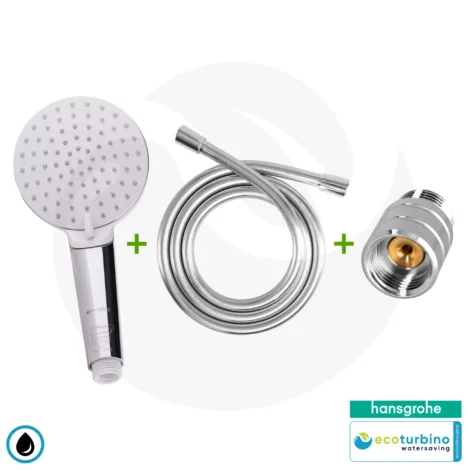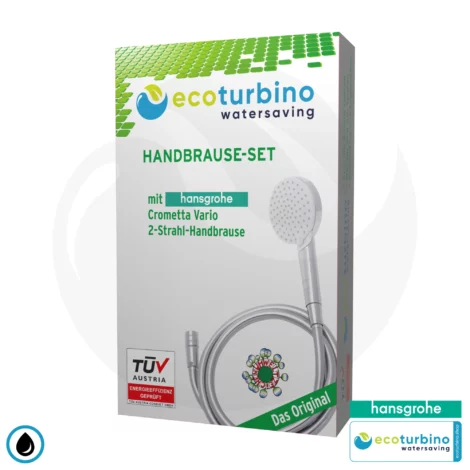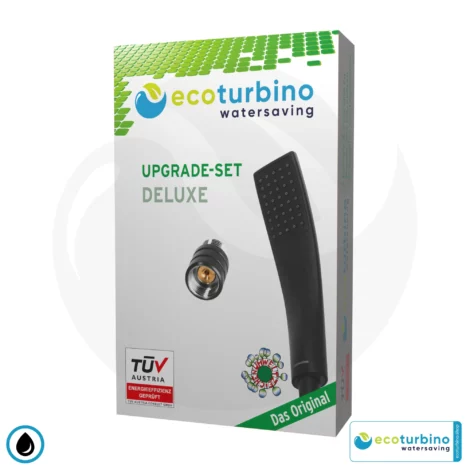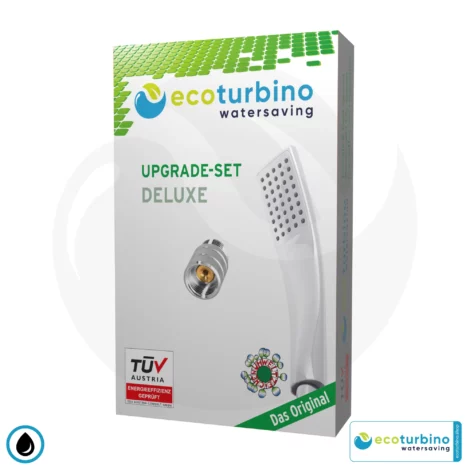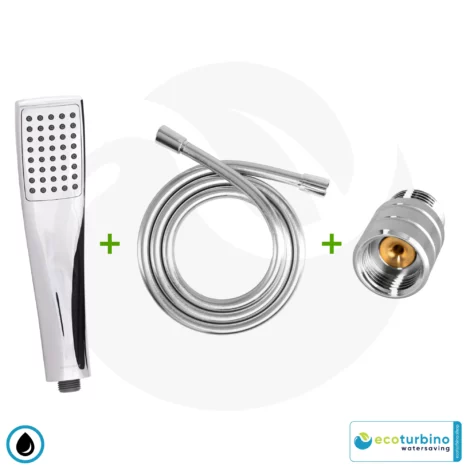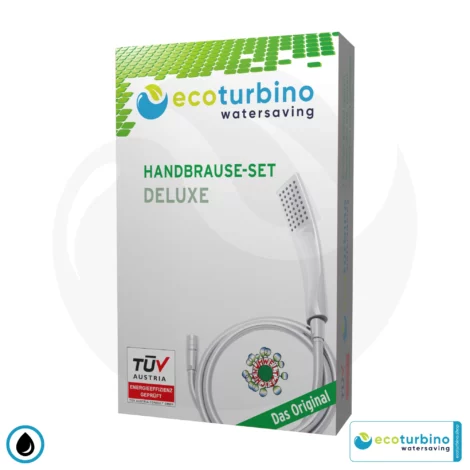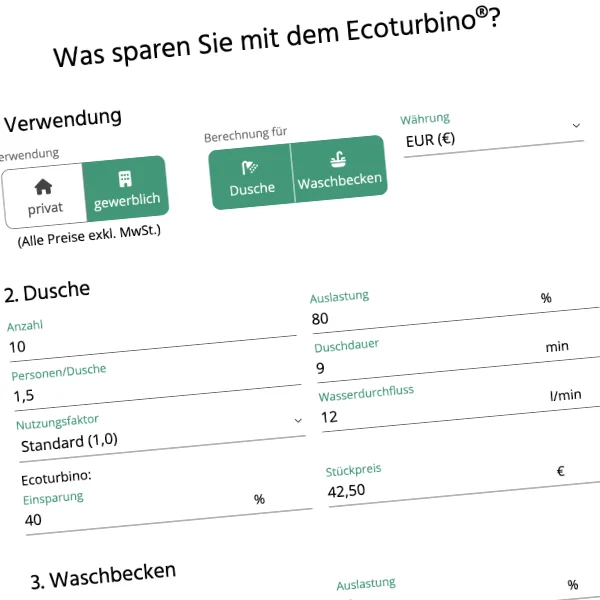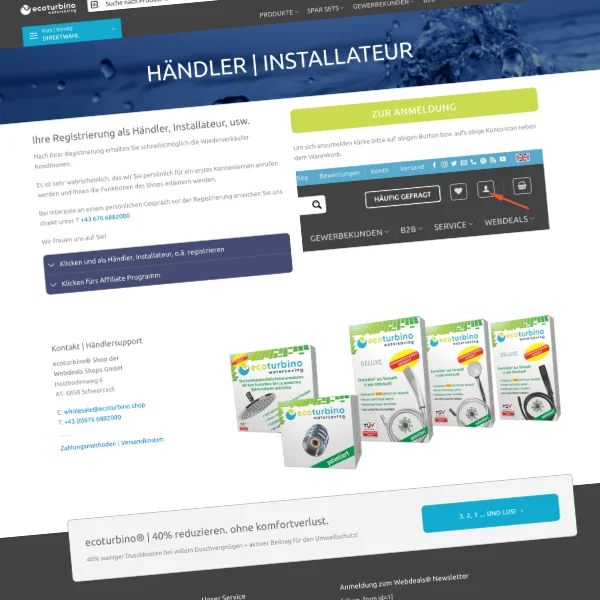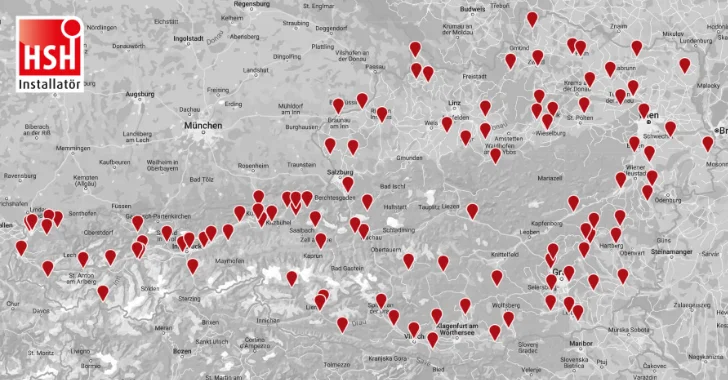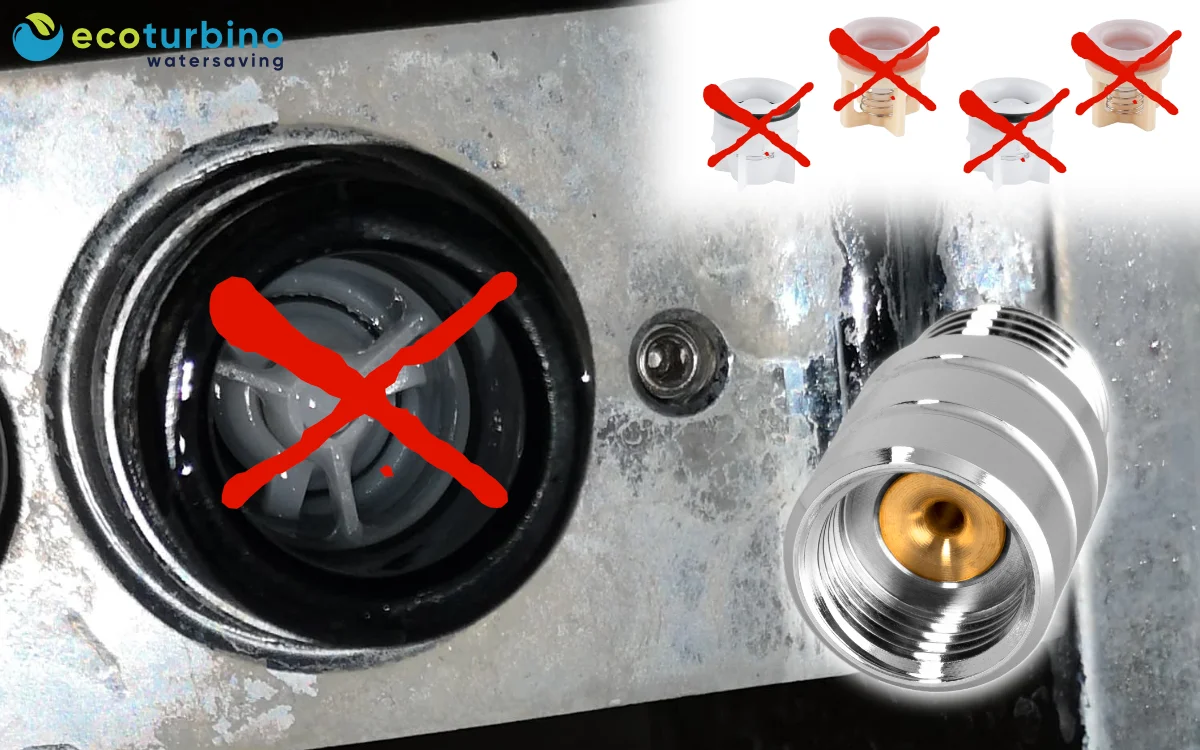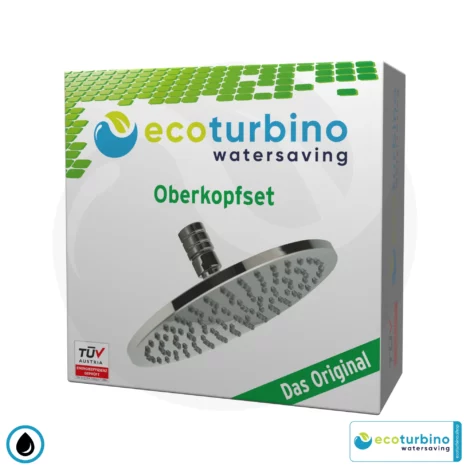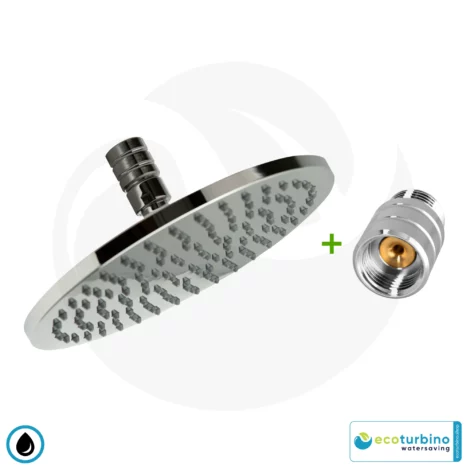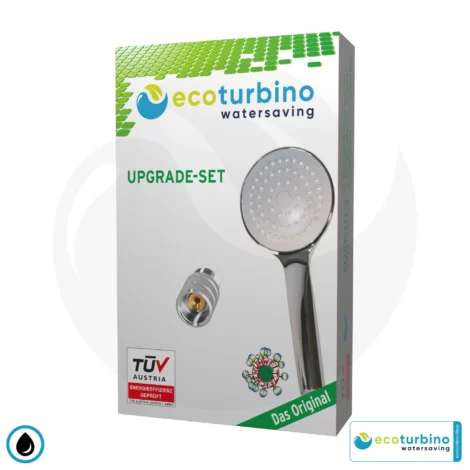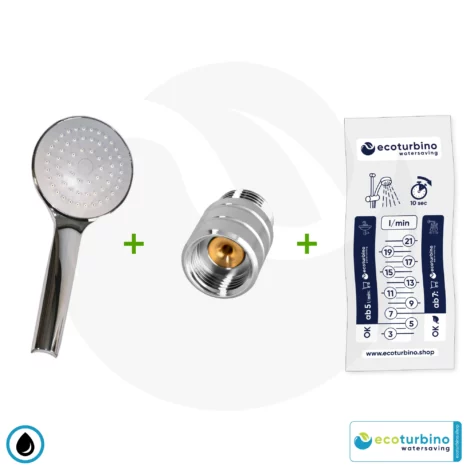Blog
How backflow preventers prevent the ecoturbino from working – and YES – they must be removed!
Why Backflow Preventers in Shower Fittings Impair the Function of the ecoturbino and Must Be Removed
The ecoturbino is an innovative adapter system integrated into shower fittings to reduce water consumption and the associated energy costs.
By utilizing a static Venturi turbine, the ecoturbino mixes air into the shower water stream, allowing up to 50% water savings without compromising shower comfort.
A key aspect of its functionality is the laminar flow of water, which is essential for the Venturi effect to work optimally. However, backflow preventers, commonly installed in shower fittings, disrupt this process by making the flow turbulent, and impurities often accumulate at these components.
This impairs the air intake system (small side hole) of the ecoturbino, preventing the intended 40-50% air from being introduced into the water stream.
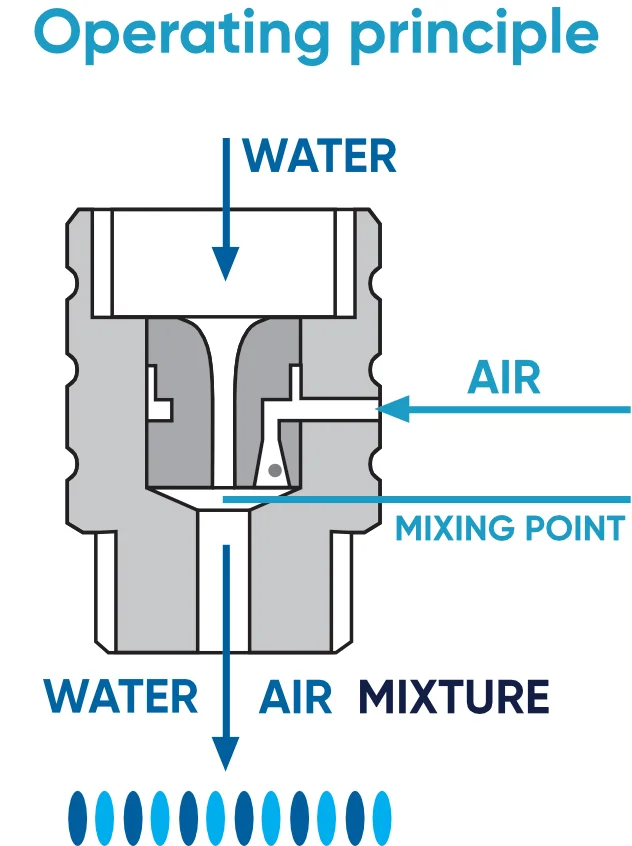
This report explains in detail why backflow preventers impair the function of the ecoturbino and why their removal is absolutely necessary. It covers physical principles such as laminar and turbulent flow as well as the Venturi effect.
What is a Backflow Preventer?
A backflow preventer is a component installed in pipelines (or fitting outlets) that prevents water from flowing back into the main supply line. This serves to protect drinking water quality by preventing contamination of the line after use.
The ecoturbino, with its shower hose drainage feature, does not require these components, as the showerhead empties after use.
In shower fittings, the backflow preventer ensures that no contaminated water from the shower re-enters the supply line. Such devices often contain valves, springs, or flaps that block or redirect water flow as needed. However, these components significantly affect the flow properties of the water and are prone to impurity buildup.
How the ecoturbino Works
The ecoturbino is a compact attachment for shower hoses or overhead showers that uses an integrated Venturi turbine to save water and energy. The system works by mixing air into the water stream, which increases the volume of the jet while simultaneously reducing water consumption.
The key to this is the Venturi effect: When water flows through a flow-optimized constriction in the ecoturbino, its velocity increases while the pressure decreases. This pressure drop creates a vacuum that draws air into the shower water stream through a side opening.
The result is a voluminous water jet with an air content of 40-50%, maintaining shower comfort with the same total volume despite using less water.
100% Functionality – Remove Backflow Preventers
Laminar and Turbulent Water Flow
To understand the impact of backflow preventers on the ecoturbino, the concepts of laminar and turbulent flow must be explained:
- Laminar Water Flow: In laminar flow, water particles move in parallel layers without mixing or cross-currents. This typically occurs in smooth pipes at low velocities. The flow is orderly, and pressure loss remains minimal. Laminar flow is characterized by a low Reynolds number (see Reynolds number Wikipedia) (below approximately 2000), a dimensionless value describing the ratio of inertial to viscous forces.
- Turbulent Water Flow: In contrast, turbulent flow is chaotic, with eddies and mixing between layers. It occurs at higher velocities or in pipes with obstacles and has a higher Reynolds number. Turbulent flow leads to increased energy loss and irregular pressure fluctuations (these fluctuations make the ecoturbino turbine system inoperable).
In water pipes, water typically flows laminarly, especially at the usual flow rates in households.
This orderly flow is essential for the ecoturbino’s function.
The Venturi Effect in Detail
The Venturi effect is a physical principle based on continuity and the Bernoulli equation. When water flows through a constriction, its velocity must increase according to the continuity equation A1·v1 = A2·v2 (where A is the cross-section and v is the velocity) because the cross-section decreases.
According to the Bernoulli equation (see Bernoulli equation Wikipedia) P + ½·ρ·v² + ρ·g·h = constant (where P is pressure, ρ is density, v is velocity, g is gravitational acceleration, and h is height), the pressure drops as velocity increases. This pressure drop creates the vacuum that draws air into the water stream.
A stable, ideally laminar flow is crucial for the Venturi effect.
With laminar flow, the pressure drop is consistent and predictable, enabling efficient air intake.
Turbulent flow, however, causes chaotic pressure fluctuations that disrupt the vacuum and hinder air intake.
How Backflow Preventers Create Turbulence
Backflow preventers disrupt laminar flow due to their design:
- Mechanical Obstacles: Valves and flaps in the backflow preventer force the water to make abrupt directional changes, leading to flow separation and eddy formation.
- Cross-Sectional Changes: Narrow passages or sudden expansions in the backflow preventer alter flow velocity and generate turbulence.
- Moving Parts: Springs or flaps may vibrate during flow, causing additional disturbances in the water stream.
These factors locally increase the Reynolds number, transforming laminar flow into turbulent flow. Even if the water arrives laminarly in the pipes, it leaves the backflow preventer in a chaotic state.
Effects of Turbulence on the ecoturbino
When water enters the ecoturbino turbulently, the Venturi turbine cannot generate the required vacuum consistently.
The irregular pressure fluctuations disrupt air intake, resulting in an air content in the water stream well below the intended 40-50%.
This significantly reduces the ecoturbino’s efficiency: Without sufficient air, more water is consumed, and energy savings fall short of expectations. Turbulent flow acts as a disruptive factor that undermines the physical conditions required for the Venturi effect.
Necessity of Removing Backflow Preventers
To ensure the optimal function of the ecoturbino, backflow preventers must be removed from the shower fitting.
Only then can the laminar flow of water be maintained, which is essential for the Venturi effect.
Without backflow preventers, water flows freely and orderly into the ecoturbino, allowing the turbine to effectively use the vacuum to mix in air. This ensures the system fully realizes its savings potential.
However, it should be noted that removing backflow preventers may raise legal or safety concerns, as they protect drinking water quality.
In such cases, alternative solutions should be considered, such as installing the ecoturbino at a point without a backflow preventer or using adapters that do not affect the flow.
Conclusion
Backflow preventers in shower fittings impair the proper functioning of the ecoturbino by converting the laminar flow of water into turbulent flow.
These turbulences disrupt the Venturi effect, making air intake inefficient and reducing the air content in the water stream below the desired 40-50%.
To fully leverage the water- and energy-saving benefits of the ecoturbino, removing backflow preventers is essential. This ensures a laminar water supply, which is critical to the system’s physical operation.
